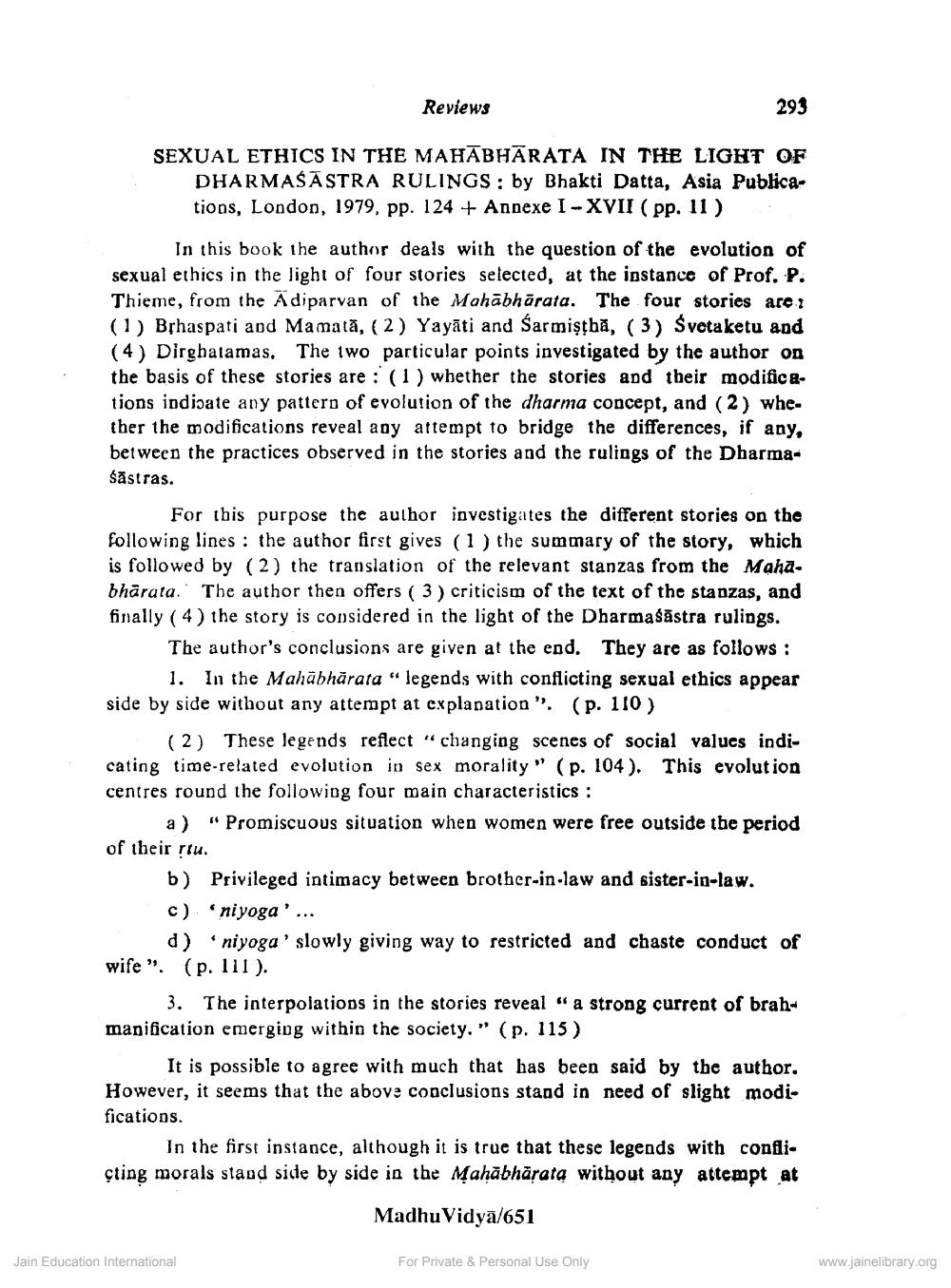________________
Reviews
293
SEXUAL ETHICS IN THE MAHABHARATA IN THE LIGHT OF
DHARMASASTRA RULINGS: by Bhakti Datta, Asia Publications, London, 1979, pp. 124 + Annexe I-XVII (pp. 11 )
In this book the author deals with the question of the evolution of sexual ethics in the light of four stories selected, at the instance of Prof. P. Thieme, from the Adiparvan of the Mahābhārata. The four stories are: (1) Bphaspati and Mamatā, (2) Yayāti and Sarmişthă, (3) Sveta ketu and (4) Dirghalamas. The two particular points investigated by the author on the basis of these stories are: (1) whether the stories and their modific &tions indioate any pattern of evolution of the dharma concept, and (2) whether the modifications reveal any attempt to bridge the differences, if any, between the practices observed in the stories and the rulings of the Dharmasăstras.
For this purpose the author investigates the different stories on the following lines: the author first gives (1) the summary of the story, which is followed by (2) the translation of the relevant stanzas from the Maha. bhārata. The author then offers ( 3 ) criticism of the text of the stanzas, and finally ( 4 ) the story is considered in the light of the Dharmaśāstra rulings.
The author's conclusions are given at the end. They are as follows :
1. In the Mahābhărata “ legends with conflicting sexual ethics appear side by side without any attempt at explanation". (p. 110)
(2) These legends reflect "changing scenes of social values indicating time-related evolution in sex morality" (p. 104). This evolution centres round the following four main characteristics :
a) "Promiscuous situation when women were free outside the period of their riu.
b) Privileged intimacy between brother-in-law and sister-in-law. c) niyoga'...
d) niyoga' slowly giving way to restricted and chaste conduct of wife". (p. 111).
3. The interpolations in the stories reveal “a strong current of brahmanification emerging within the society.” (p. 115)
It is possible to agree with much that has been said by the author. However, it seems that the above conclusions stand in need of slight modi. fications.
In the first instance, although it is true that these legends with confliçting morals stand side by side in the Mahabharata without any attempt at
Madhu Vidyā/651
Jain Education International
For Private & Personal Use Only
www.jainelibrary.org




